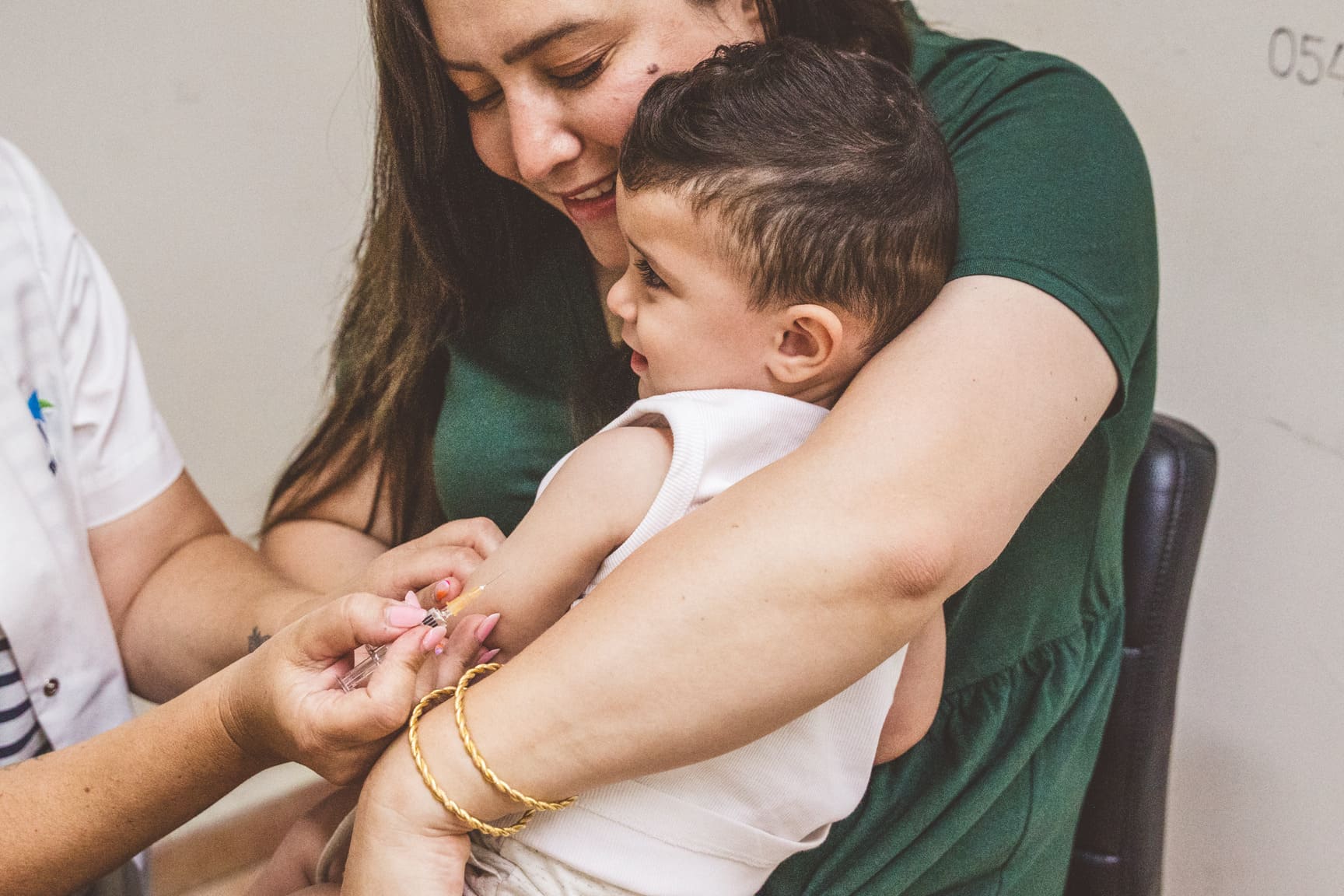Influenza Vaccine
Vaccine schedule
-
Once a year
About
The influenza virus attacks the respiratory system and spreads easily. It can be transmitted through coughing, sneezing, or contact with nasal fluids or saliva. Symptoms include a fever over 100.4°F, sore throat, headache, runny nose, cough, muscle aches, weakness, fatigue, and loss of appetite.
Every year, 20% to 30% of children get the flu, making them a major source of infection for everyone else. Infants and children are at high risk for flu and complications like pneumonia. In severe cases, the illness can result in hospitalization or even death. The risk of severe flu is even greater for children with heart disease, respiratory issues, or neurological disorders.
Vaccine
The flu vaccine is safe and effective, offering good protection for one winter season. Each fall, a vaccine is developed for the strains expected to be most common in the upcoming year. Vaccination is especially important for people at risk of flu complications, including infants and children aged six months to five years.
Two types of flu vaccine
-
Inactivated influenza vaccine – recommended for anyone six months and older.
-
Live attenuated influenza virus vaccine – recommended for ages two to 49. This vaccine not only provides overall protection but also protects the nasal and oral areas, where the virus spreads. It is not given to people with asthma, weakened immune systems, or pregnant women.
Vaccination schedule: The vaccine is available at health maintenance organizations (HMOs) starting in the fall each year and in schools for grades 2–4. In special education, children in grades 1–6 receive the vaccine. It is recommended to get vaccinated in September or October to prepare for the winter season.
How many shots are needed:
-
Children under 9 who have not been vaccinated before should receive 2 shots, with a 4-week gap between the first and second shot.
-
After that, only one shot is needed each year.
| Type of vaccine | Vaccine composition | Vaccine administration |
| Inactivated | Inactivated viruses | Until the age of 3—by injection to the thigh; from the age of 3—by injection to the arm |
| Live attenuated | Live attenuated viruses that cannot multiply at normal body temperature | Nasal spray |
Vaccine Safety
The flu vaccine is considered safe and effective. In the largest study of its kind in the United States, conducted from 2001 to 2003 and involving over 40,000 infants and toddlers aged 6 to 23 months, medical interventions after receiving the flu vaccine were studied. It was found that there were very few interventions, and none of them were serious.
When the flu vaccine should not be given
Flu vaccines cannot cause illness, and most children will be able to receive the flu vaccine.
Here are the cases when the vaccine should not be given:
-
If there is an illness accompanied by a high fever. In such a case, vaccination can only occur after recovery.
-
If the child has asthma, a chronic or ongoing illness, or has recently received flu treatment, it is advisable to consult with the nurse that gives the vaccine.
-
If there has been a past severe allergic reaction after receiving the flu vaccine (if the allergic reaction was mild, vaccination is permitted). However, if there is an allergy to milk, egg protein, or peanuts, vaccination is allowed.
Potential side effects and how to relieve them
A small portion of those who receive the influenza vaccine may develop side effects after getting it. However, these side effects are usually mild and go away on their own within two or three days.
After getting the inactivated flu vaccine:
-
Redness, pain and swelling where the shot was given
-
Fever
-
Feeling unwell
-
Hoarseness, coughing, eye irritation and itchiness
-
Redness and pain where the shot was given, along with local swelling or swelling in the entire limb: you can apply a clean cloth soaked in lukewarm water to the injection site and avoid massaging the area.
-
Fever: a medication can be given to reduce fever and relieve pain.
-
Feeling unwell: headache, muscle pain, and fatigue; a medication can be given to reduce fever and relieve pain.
- Hoarseness, coughing, eye irritation, and itchiness: these may persist for a day or two after the vaccine is given.
After getting the live-attenuated flu vaccine:
-
Runny nose, nasal congestion, headaches, throat ache, coughing, and nasal bleeding
Runny nose, nasal congestion, headaches, throat ache, coughing, and nasal bleeding: a medication can be given to reduce fever and relieve pain.
When to seek medical care at an HMO or medical center
- If your child is apathetic.
- If fever lasts beyond 24-48 hours.
- If there are changes in appetite and eating patterns beyond 24-48 hours.
- If any other phenomenon causes concerns.
If your child experiences symptoms after getting vaccinated in school, please inform the school nurse or the school's healthcare provider.
Listing of healthcare providers by district
Transmission after vaccination
The vaccine is safe, but can someone who received the flu vaccine transmit it to others?
- Inactivated vaccine: made of dead viruses that cannot make one sick, and it is therefore impossible for anyone who was vaccinated to infect another person.
- Live attenuated vaccine: can be dangerous to people with a weakened immune system. In the event children receive a live attenuated vaccine, it is crucial that they avoid contact with people with a severely weakened immune system (i.e. they need to be in an environment that is free of bacteria and viruses) for 7 days after vaccination.






















